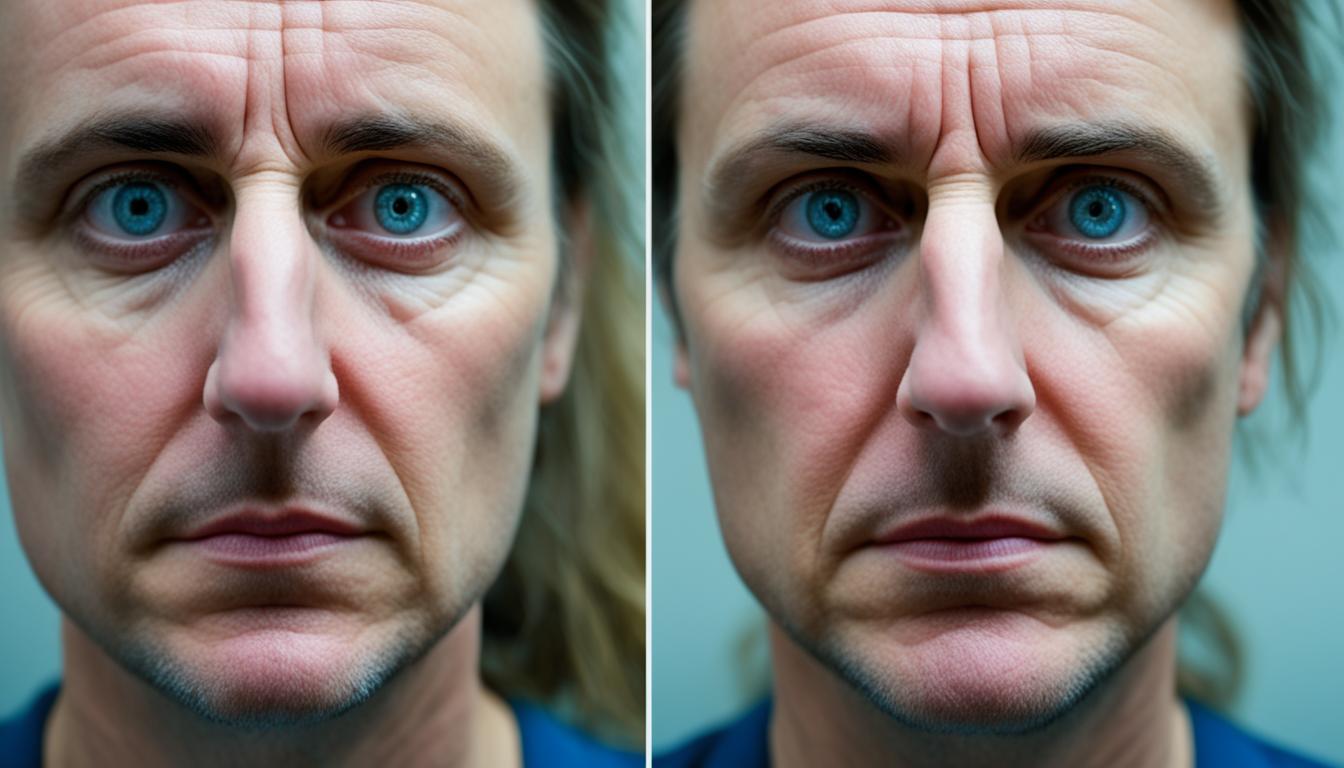Bell’s palsy is a type of facial paralysis. It affects one side of the face, making it hard to move. The cause isn’t always clear, but it’s often linked to problems with the facial nerve. This nerve helps control your face’s muscles.
The condition starts suddenly. Then, it might get worse over a day or two. We don’t always know why it happens. But certain health conditions or infections can raise your risk.
Diagnosing Bell’s palsy means ruling out other possible causes. Finding the cause early is really important for the best treatment. Most people get better within three weeks. But, some might need help if their symptoms last longer.
Doctors are looking into using stem cell therapy to treat Bell’s palsy. This shows promise for the future of treating this condition.
Key Takeaways:
- Palsy Bell’s, also known as acute facial palsy, affects one side of the face with muscle issues.
- Bell’s palsy is linked to the facial nerve and often starts quickly.
- It’s important to find the cause early to treat it well.
- Stem cell therapy could be a new way to treat Bell’s palsy.
Anatomy and Etiology of Bell’s Palsy
Understanding the facial nerve is key to knowing the difference between types of issues. The nerve is divided into motor, sensory, and parasympathetic parts. It moves in segments through the body, reaching from the brain to the face.
This nerve controls parts of the face, like muscles and glands. Because of this, it’s important for facial expressions and other functions.
Bell’s palsy may happen when certain viruses become active again. These are often viruses like herpes zoster and herpes simplex. But, other viruses can also be a factor.
In some cases, issues with blood flow, like in people with diabetes, might cause Bell’s palsy too.
Stem Cell Therapy for Bell’s Palsy
Stem cell therapy is a new hope for fighting Bell’s palsy. This disease causes paralysis of the face. By using cells from the umbilical cord (UC-MSCs), it’s possible to help the body heal. This method is especially good for people who haven’t gotten better with usual treatments.
A special study shows the power of UC-MSCs. In this study, a person had Bell’s palsy for seven years. After receiving eight UC-MSC treatments, this person got completely better. Their symptoms did not come back. This success hints at a new chance for those not helped by other treatments.
More research is needed to fully understand stem cell therapy for Bell’s palsy. Yet, the results of the study are uplifting. They show promise in using UC-MSCs to tackle this condition. This gives hope for the future of treating Bell’s palsy.

